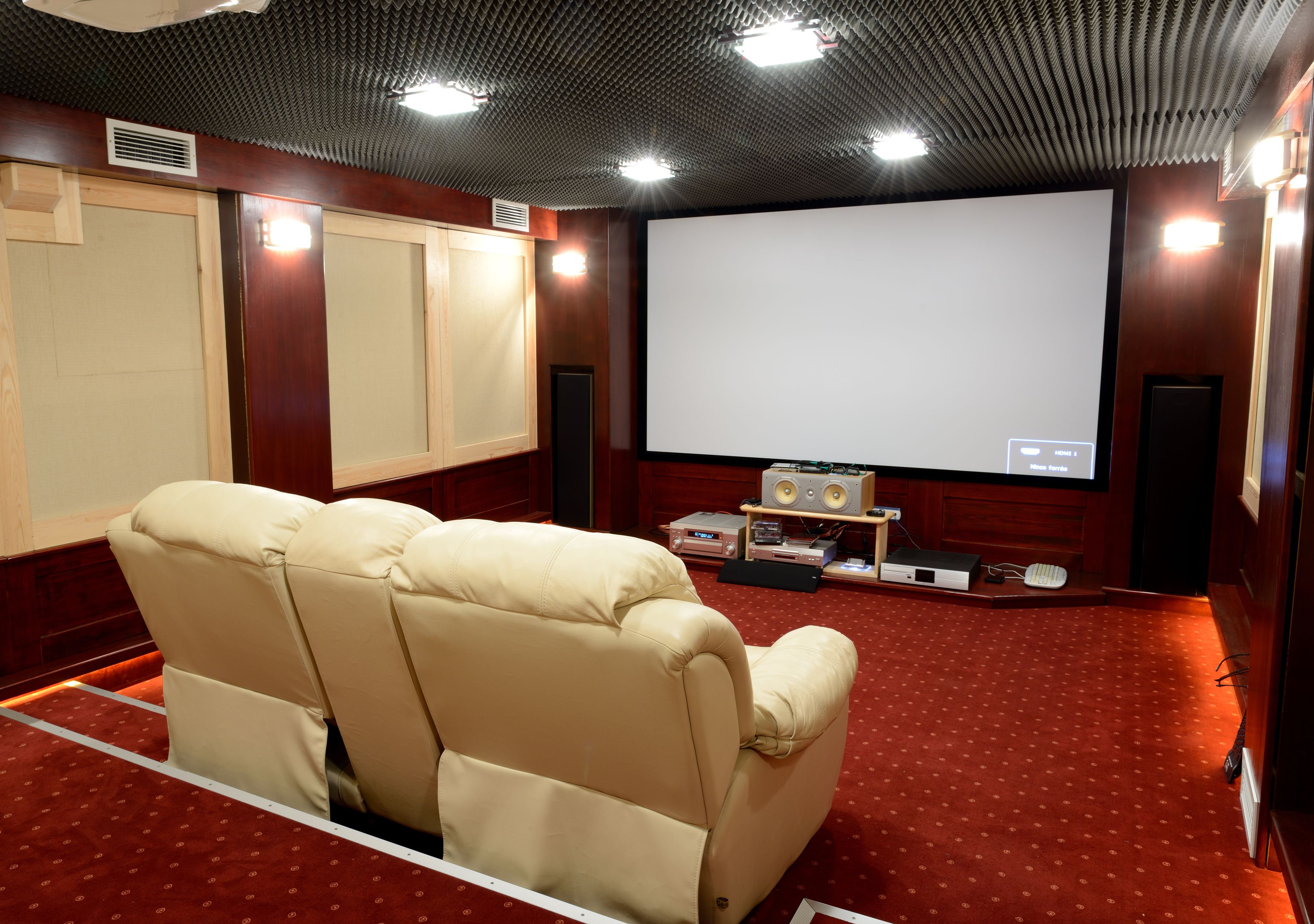Home Theater Design What To Consider
Why would anyone want to install a home theater? Well, the movie palaces are getting too expensive, its a crowded, noisy, hot and sticky experience, and people may not even feel safe in public theaters anymore.
If one wants to install a home theater, there are several things to remember in creating a successful home theater design. After all, its no longer a question of placing a big-screen TV in front of a couch and popping in a DVD; home theater design has become an art form over the years.
One need only consider the different technological leaps that home entertainment has taken since its days of 24 inch screens and VHS players. They now have DVD/Blu-Ray/A-V receivers, Speakers of every stripe, as well as High-definition TVs and players, 3-dimensional home theater experiences, LCD, Plasma TVs and newer innovations coming out just this week.
One also needs to know the best room, and best design for that room, for a home theaterit isnt necessarily the living room anymore.
To start, the consumer needs to do some internet research, not just of home theater models but also of components available. Most internet entertainment stores, from Amazon.com to the ones that specialize exclusively in home theater components, offer a wide variety of the best AV equipment, from large screen HDTV (high-definition) to video projectors to speakers designed to set in every corner of the room as unobtrusively as possible.
With all this comes the budgetary consideration; how much of a bottom line for a home theater can the consumer afford? The home theater speaker system, retailing for $199, is seldom enough; home theaters can cost from $1,000 to $15,000 and more. Its a good idea to check the financial resources before settling on a model for home theater experiences.
Plasma TVs, for example, were once the backbone of the home theater, but are at the moment somewhat overpriced and, in view of new advancements in video projector technology, under-performing for a home viewing experience. Big screen video projection apparatus is available now that is clearer, more compact and sharper than the plasma viewing experience; the consumer owes it to himself to visit showrooms and compare the look.
There are also three kinds of rear projection: LCD (liquid-crystal display) TV, DLP (digital light processing) and CRT (cathode ray tube); the home theater owner will probably need to determine what system is clearest, sharpest, most compact and most economical for his particular situation. A home theater is hopefully a one-time creation; it should be the best experience for the money.
One should also research what screen size in the selected room will involve the most impact (it isnt necessarily the biggest one), what distances in the room are best for family members viewing, what acoustics the room has, where the speakers are best placed, how the room is best lighted and how the overall visual concept is best designed to make a strong impression.
There have also been considerable advancements in front projection, with the creation of the Big Screen Video projector, the fixed pixel projector. This might be more suitable for the home theater instead of a big screen TV. Again, internet research, visiting a showroom and talking to an expert will give the best information for the consumer.
Next, one should consider the sound system, where there are several Surround-sound options such as Dolby and DTSone might want to invest in one of the newest 7.1 channel A/V receivers. In addition, theres a huge selection of home theater speakers on the home theater market, from woofers and tweeters to wireless models.
Finally, one should consider the remote controlin other words, how can one simplify the system so that one remote controls all?
Its a huge amount of buying research, but most consumers, when they fire up their home theater system for the first time, feel it is well worth it.
Category: Home Theater
Business News
Popular Posts
- Universal Pursuit of Happiness - Wisdom from World Religions
- Overcoming Ego and Self-Centeredness - Lessons from World Religions
- Transcending Materialism - Spiritual Practices from World Religions
- Overcoming Prejudice and Intolerance - Guidance from Global Faiths
- How Mind Balance Can Improve the Mindsets of Employees
- Interfaith Insights by 1WorldPeace - The Top 100 Universal Beliefs in Global Spirituality
- Bridging Beliefs - Finding Common Ground in Love and Respect
- The SmartGuy Vision - A United Future Through Interfaith Love and Respect
- A Cautionary Vision - The Grim Future of a Divided World Without Love and Balance
- A Tapestry of Faiths - Exploring the Common Threads in World Religions
- Fostering Harmony Among Christianity Islam Buddhism Hinduism and Judaism
- Preparing Kids for Adulthood - 15 Vital Skills They Wont Learn in School
- Navigating Diversity - Jerusalem's Tactical Approach to Interfaith Harmony
- Clearing Mental Plaque: The Path to Enhanced Communication and Divine Connection
- Why Return to Jesus Christ and the Church
- Top 50 Ways to Live Longer
- Adventurous Romance -The Key to Enhancing Relationship Chemistry
- Pork Tenderloin with Mustard Cream Sauce
- Navigating Technology and Media for Optimal Mental Well-Being
- Understanding the Link Between Mental Health and Substance Abuse
